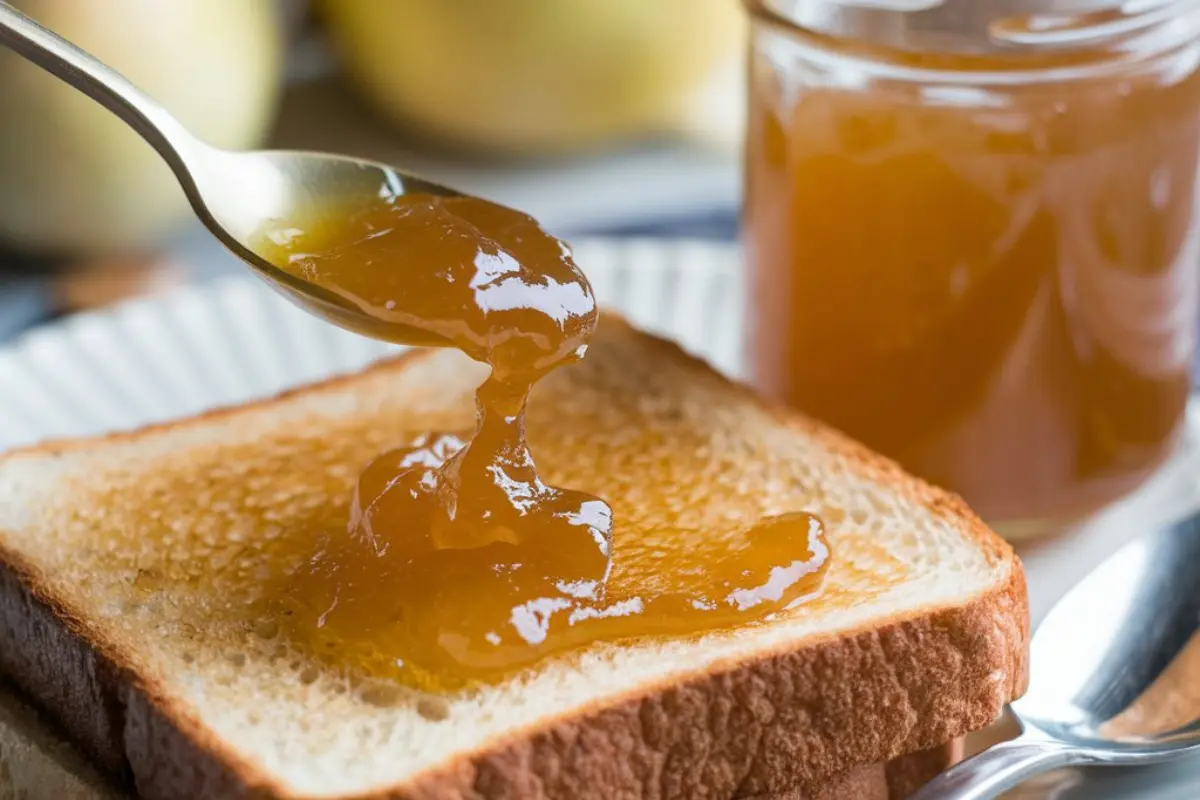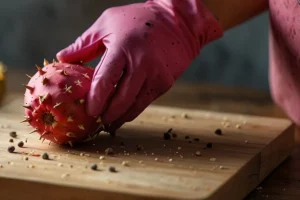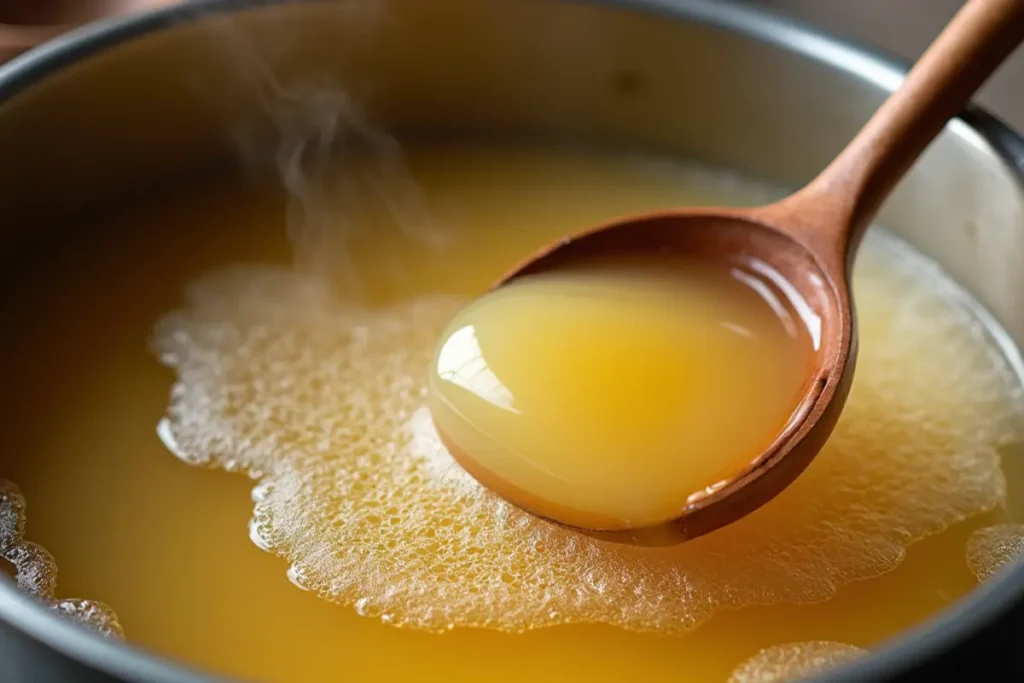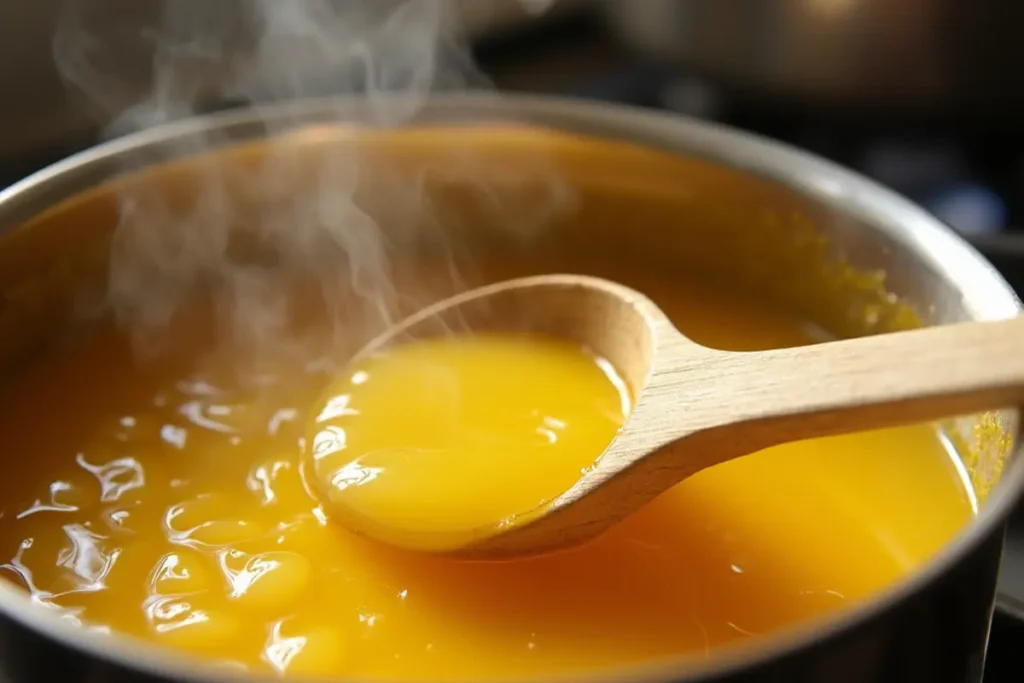Making a delicious pear jelly recipe at home is easier than you might think. Whether you’re looking for a traditional recipe for pear jelly or want to try something unique like prickly pear cactus jelly, this guide will walk you through both. From the ingredients to the canning process, everything is covered to make your jelly-making experience smooth and enjoyable. Get ready to enjoy naturally sweet, preservative-free jellies that are perfect for breakfast spreads, gifting, or enjoying with your favorite snacks.
Why These Pear Jelly Recipes Stand Out

These tested recipes deliver consistent results whether you’re making traditional pear jelly or exploring a new flavor with prickly pear cactus jelly. Here’s why our guide is a go-to:
- Versatile Options: Choose between a classic pear or a prickly pear cactus jelly recipe, each with a unique taste and appeal.
- Natural Ingredients: With no artificial preservatives or additives, these recipes highlight the natural flavors of the fruits.
- Beginner-Friendly: Step-by-step instructions guide you through both variations, ensuring an easy process for first-time canners.
- Reliable Results: Methods are tested to achieve a perfect set every time, so your jelly will have just the right consistency.
Recipe Details
- Difficulty Level: Easy to Medium
- Prep Time: 30 minutes
- Cook Time: 30 minutes
- Setting Time: 24 hours
- Total Time: 25 hours
- Yield: 6 half-pint jars (3 pints total)
- Servings: Approximately 24 servings
Essential Ingredients
Classic Pear Jelly Recipe Ingredients
- 5 cups fresh pear juice (10-12 ripe pears)
- 1 box powdered pectin
- 7 cups sugar
- 1-2 tablespoons lemon juice

Prickly Pear Cactus Jelly Recipe Ingredients
- 5 cups prickly pear cactus fruit juice (about 20 fruits)
- 1 box powdered pectin
- 7 cups sugar
- 1-2 tablespoons lemon juice
Equipment Needed
- Canning jars with lids (half-pint jars are ideal for jelly)
- Large canning pot for boiling the jars
- Fine-mesh strainer or cheesecloth for clear juice
- Ladle and funnel for transferring jelly into jars
- Thermometer (optional) for checking temperature
- Protective gloves (for handling prickly pears)
Step-by-Step Instructions
For Traditional Pear Jelly
- Prepare the Fruit: Wash and cut the pears into quarters. Remove the cores and seeds but keep the skins on, as they contain natural pectin. Put the fruit in a big pot and pour water over it. Simmer for 25-30 minutes until the pears are soft.
- Strain the Juice: Pour the cooked fruit through a cheesecloth-lined strainer to capture clear juice. Avoid pressing the fruit to prevent cloudiness.
- Make the Jelly: In a pot, combine the pear juice, pectin, and lemon juice. Bring it to a rolling boil, stirring continuously. Once boiling, add the sugar all at once, return to a boil, and cook for 1-2 minutes.
- Test the Set: Use the cold plate method to test if the jelly is setting correctly. Drop a small amount onto a chilled plate; if it wrinkles when pushed, it’s ready.

For Prickly Pear Cactus Jelly
- Prepare Prickly Pear Juice: Carefully peel the prickly pear cactus fruits while wearing gloves. Slice the fruits and place them in a pot, covering them with water. Simmer until they’re soft and strain thoroughly for a clear juice.
- Cook the Jelly: Follow the same cooking steps as the pear jelly. Because prickly pears have a different natural pectin level, keep an eye on the set by testing frequently.
Pear Jelly Recipe Canning and Storage
Prepare Jars
Sterilize jars and lids by boiling them in a canning pot. Keep them hot until you’re ready to fill.
Fill and Process
- Leave a ¼-inch headspace in each jar.
- Wipe the rims clean to ensure a proper seal.
- Process the jars in a water bath for 10 minutes, then allow them to cool undisturbed for 24 hours.
Your homemade pear or prickly pear cactus jelly is versatile and can be used in many ways beyond a simple spread on toast. Here are some creative serving ideas:
- Breakfast Topping: Spread over pancakes, waffles, or biscuits for a sweet, fruity flavor.
- Cheese Pairing: Enjoy with aged cheeses on a charcuterie board to add sweetness.
- Meat Glaze: Heat jelly with a touch of vinegar to glaze roasted pork or chicken.
- Dessert Drizzle: Add a fruity touch to vanilla ice cream or yogurt.
- Baking: Use as a filling for thumbprint cookies or cake layers.

Pro Tips for Perfect Results
- Choosing the Right Pears: Ripe, juicy pears like Bartlett or Anjou yield the best flavor for pear jelly.
- Prickly Pear Handling: Always wear gloves when handling prickly pear fruits to avoid skin irritation.
- Testing Set: If the jelly doesn’t set immediately, don’t worry—it can take time. For a firmer set, add an additional ½ teaspoon of pectin and reboil.
- Alternative Sweeteners: Honey or maple syrup can be used but will alter the flavor and texture.
Serving Suggestions
Troubleshooting Common Issues
- Soft Set: If your jelly doesn’t set as expected, reboil it with a bit more pectin.
- Cloudy Jelly: This usually occurs from insufficient straining. Strain juice multiple times through fine cheesecloth.
- Crystallization: Ensure that all the sugar is fully dissolved before boiling to avoid crystallized jelly.
- Dark Color: Reducing the cooking time and using fresh juice can help maintain a lighter color.
FAQs
Q: Can I make a Pear Jelly Recipe without pectin?
A: Yes, you can, though it may result in a softer set. Cook the juice longer and use high-pectin pears.
Q: Can I reduce the sugar?
A: Reducing sugar can affect the set and preservation. Use low-sugar pectin if desired.
Q: How do I store jelly?
A: Unopened jars should be stored in a cool, dark place for up to a year. Once opened, refrigerate and consume within 2-3 weeks.
Q: Why did my jelly turn cloudy?
A: Cloudiness usually results from incomplete straining. For a clear jelly, strain several times through a fine cheesecloth.
Q: How long does prickly pear cactus jelly last?
A: Properly sealed jars can last up to 12 months if stored in a cool place. Always check for signs of spoilage before using.
Q: Can I double the pear jelly recipe?
A: Doubling jelly recipes isn’t recommended as it can affect the setting process. Make separate batches for best results.
Final Tips for Success
Homemade jelly can be incredibly rewarding, especially with the unique flavors of pear and prickly pear cactus. Remember to label jars with the date and type of jelly, and always follow proper canning safety guidelines. These jellies make for thoughtful gifts and delightful additions to your kitchen pantry. Enjoy the process, and savor the fruits of your labor with every spread!



